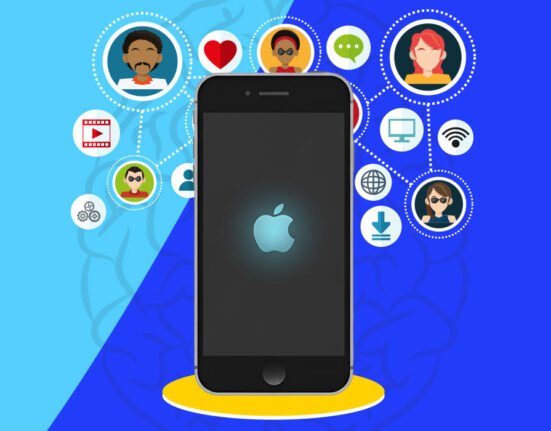Language that can be traced back to the world of psychology has always been a part of the common lingo. Terms like ‘repression’, ‘slip of the tongue’, and ‘inner child’ all stem from the work of Freud. However, over the last decade, the language of the therapy room has seen a drastic rise in our everyday conversations, especially on the internet. This phenomenon, known as therapy-speak, is a double-edged sword.
If one were to believe the internet, one would think that the current generation is extremely psychologically enlightened. We talk about ‘love languages’, ‘attachment styles’ and coping mechanisms so casually. We claim that we have been triggered, we call out ‘toxic’ and ‘narcissistic’ people, we discuss our ‘boundaries’, we complain about how we have no time for ‘self-care’ or how much ‘emotional labour’ it takes to have a conversation with a friend, and we even diagnose ourselves with ‘ADHD’ and ‘Depression’.
Read More: Your First Therapy Session
One reason for the rise of therapy-speak is COVID-19. When the pandemic was at its peak, people were isolated in their homes, but mental disturbances due to this new and restricted lifestyle were at an all-time high. A lot of psychologists and therapists took to social media to explain psychological concepts to help people who couldn’t attend therapy.
However, this attempt to compress complex psychological topics into minute-long videos or short posts backfired, and people began adopting concepts they couldn’t fully understand. Historically, mental health and illnesses have been shrouded in stigma. Such open discussion around mental health can indicate a positive turn in the current generation. The more the mental health vocabulary became popular, the more people could relate their struggles to the experiences of many others.
However, there is a paradox. While the normalization of therapy-speak is good, its weaponization or misuse is bad. The popularity of therapy-speak morphs the meaning of the terms that enter popular vocabulary. People apply their half-baked knowledge and use words and phrases without nuance. Therapist Esther Perel mentioned how therapy-speak is merely a new term for an old concept – ‘Psychobabble’. Let’s look at how therapy-speak can do more harm than good.
The Dangers of Therapy-Speak:
1. Loss of Nuance
Therapy terms have been seeping into everyday conversations through social media. There are thousands of posts and videos on TikTok and Instagram with the hashtag ‘#gaslighting’ or ‘#trauma-bonding’. Although therapists appreciate it when their clients in therapy grasp a new concept and can successfully apply it to their daily lives, they also warn of the dangers of therapy-speak, especially when the source of information is not trained professionals, but social media.
Terms get diluted as they become mainstream. For example, the word ‘trauma’ actually refers to a severely distressing experience, such as physical abuse, a mass shooting, or a natural disaster. But on the internet, it has now boiled down to mean anything that is mildly upsetting. A person may tweet “I had the most traumatic metro ride today.” just because it was crowded and they got pushed. This overapplication of the term does a disservice to those who have legitimate traumatic experiences.
2. Self-isolation and Emotional Distancing
Psychologist Esther Perel also talks about how there is a bias in therapy-speak towards the self. This extra emphasis on the ‘self-care’ aspect of it is making people more isolated and alone. Therapeutic language helps us tidy up all our emotional messes and categorise them in tidy little boxes or labels. But the overuse of this tidying is taking away the empathy and humanity from our relationships. The complexity of the terms is lost. People use them to avoid confrontation with real emotions.
For example, therapy-speak allows you to cancel a plan at the last minute, and avoid blame by saying “I’m setting a boundary” or saying that you were ‘triggered’ instead of accepting that someone’s actions caused you hurt. Therapy-speak is misused by people to obfuscate their internal feelings behind a veil of pseudo-scientific language.
3. Weaponization of Therapy-speak
Another phenomenon at play that psychologists have observed is the weaponization of therapeutic language. The perfect example is the recent debacle wherein actor Jonah Hill’s text messages with his ex-partner surfaced online. He had been using the term ‘boundaries’ to control his partner’s actions. Therapy terms can be misused to label people and justify certain actions. Pathologizing another person by labelling them with therapy gives the speaker authority in the conversation. It entirely negates the other person’s feelings and strips them of the complexity of emotions. In relationships, people accuse their partners of gaslighting and manipulation just to get the last word and win the argument.
4. Inaccurate Self-Diagnosis
TikTok has a niche of video called ‘TherapyTok’ where people make videos about what are common coping mechanisms, common symptoms of ADHD, trauma responses, Autism behaviours and more. These videos are often made only to garner views and are not backed by any scientific knowledge. But viewers tend to believe them and begin relating even their normal behaviours to symptoms of a mental disorder. This can cause a mental crisis and a lot of unnecessary concern amongst people.
As therapists have suggested, we must go back to describing our emotions with more words and not resort to therapy-speak. While it is good to de-stigmatise mental health issues, it must not come at the cost of our interpersonal relationships and trivialising serious disorders. We should reserve therapy-speak for the therapy room engage in conversations with those around us with full acknowledgement of our emotions and steer clear of the sterility of therapy-speak. Although it is best left to professionals to explain to us what these terms mean, the following are some commonly misused terms and their actual meanings, to help us avoid using them in contexts they don’t apply.
Are you looking for some books on Mental Health and Therapy? we got you 😉
“Good Reasons for Bad Feelings” by Randolph M. Nesse
“The Four Winds: A Novel” by Kristin Hannah
“An Unquiet Mind: A Memoir of Moods and Madness” by Kay Redfield Jamison
“Mental: Lithium, Love, and Losing My Mind” by Jaime Lowe
Some Commonly Misused Psychological Terms:
- Trauma Bonding: Trauma bonding is commonly misunderstood to mean bonding over a shared difficult experience. However, it refers to when a person who was abused develops an emotional connection to their abuser.
- Gaslighting: Gaslighting has become a synonym for lying. But that is inaccurate and gaslighting involves a much more complex process. It is a kind of psychological manipulation in which the perpetrator makes the victim question their perception of reality.
- Narcissist: The word narcissist is used very broadly, to refer to any person who is arrogant or selfish. But Narcissistic Personality Disorder involves extreme self-esteem issues, grandiose self-perception, and a need for approval and admiration from others.
- OCD: OCD is one of the most misunderstood disorders. People use it to refer to people who like tidiness and organization. The actual condition is much more complex and involves obsessive thoughts and compulsive behaviours that the person has no control over.
- Attachment Styles: People have been using attachment styles to justify behaviours such as ghosting. In reality, the concept of attachment styles talks about the relationship of an infant with their primary caregiver and how it impacts their intimate relationships in the future.
Read More Articles related to therapy
- CBT Techniques for Anxiety
- Positive Psychotherapy: A Unique Approach to Mental Health
- Group Therapy: Aim, Benefits and Types
- Family Therapy













Leave feedback about this